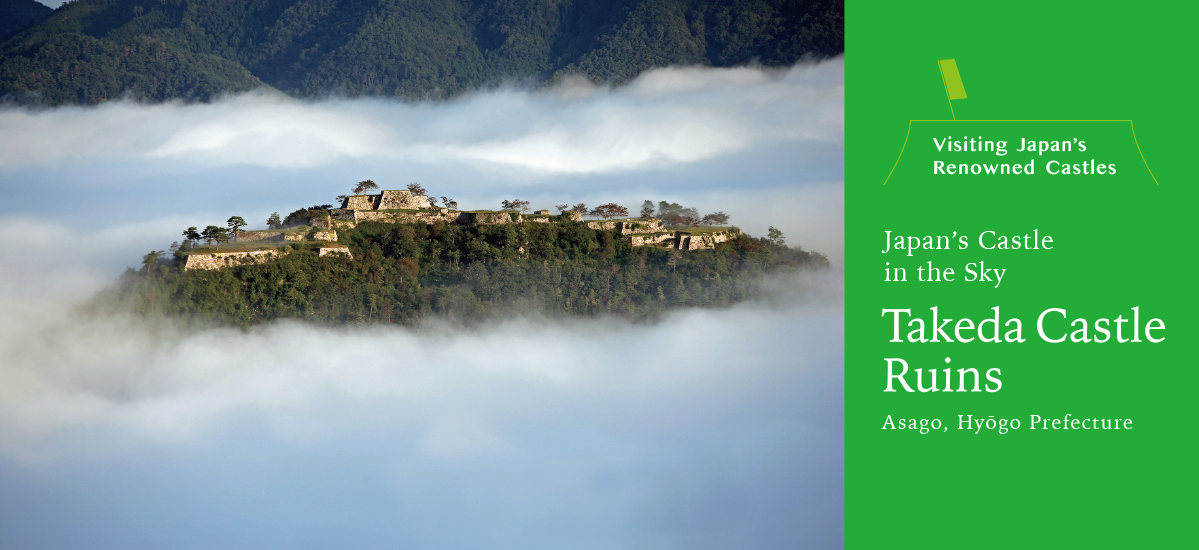
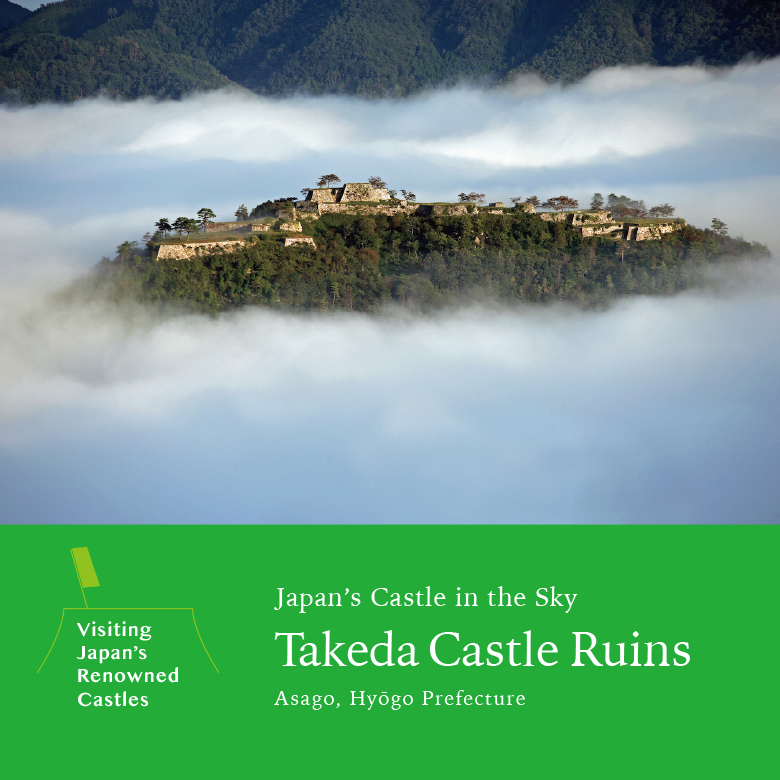
Steadfastly defended and then ultimately abandoned during Japan’s Warring States period, Takeda Castle lay quietly crumbling for hundreds of years, far removed from the main stage of history. All that changed in 2006, when after decades of restoration work on its once-impregnable stone walls, “Takeda Castle Ruins” was selected as one of Japan’s “Top One Hundred Castles”. Thrust into the spotlight since then, images of the castle’s majestic stone walls soaring above the clouds have seen the ruins used as a film location and even in an advertisement for Google. But why go to all the trouble of building a castle on a provincial mountaintop far from the centre of politics in the first place? The answer to this question lies under the ground in the rich reserves of silver once found here.
Photos : 吉田 利栄 Toshihisa Yoshida / English Version : Judy Evans
Keyword : History / Takeda Castle Ruins / Hyogo Prefecture / Samurai / Japanese Castles / Yamana Clan / Otagaki Clan
Takeda Castle – Hotly Contested and Fiercely Defended
Dubbed the “Castle in the Sky” or even the “Japanese Machu Picchu”, Takeda Castle, a designated national historic site, is strategically located above the point where the San’in-dō route from Kyōto to the Japan Sea and the Bantan-dō route north from Himeji meet. In constructing this quintessential mountain fortress, the castle builders ambitiously levelled the summit and uppermost ridges of the mountain (354 m) above the town of Asago, in the former province of Tajima (now Hyōgo Prefecture).
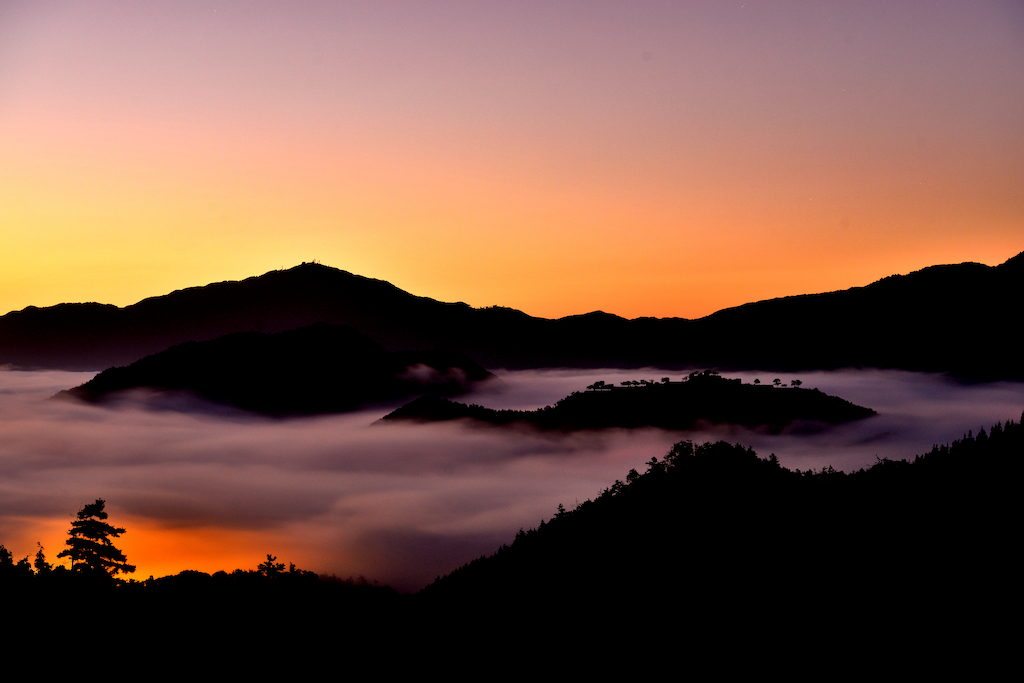
The territory and its silver mines, including the Ikuno Ginzan mine dating back to 807, were under the control of the powerful Yamana Clan for centuries. Yamana Suketoyo, possibly the most famous member of the clan, had established another successful silver mine, Iwami Ginzan, by the mid-1500s. When political ineptitude and internal strife saw the eventual downfall of the Yamana Clan, the subordinate Ōtagaki Clan, who had been in charge of the region for several generations, seized the chance for independence and assumed control of the castle and the silver mines. The Ōtagaki held their own against surrounding clans seeking control of the mines, but were unable to withstand the mighty Oda Nobunaga’s advances into Tajima Province. Takeda Castle was captured by Nobunaga’s general, Toyotomi Hideyoshi, who was soon to become ruler of all Japan, if only briefly.
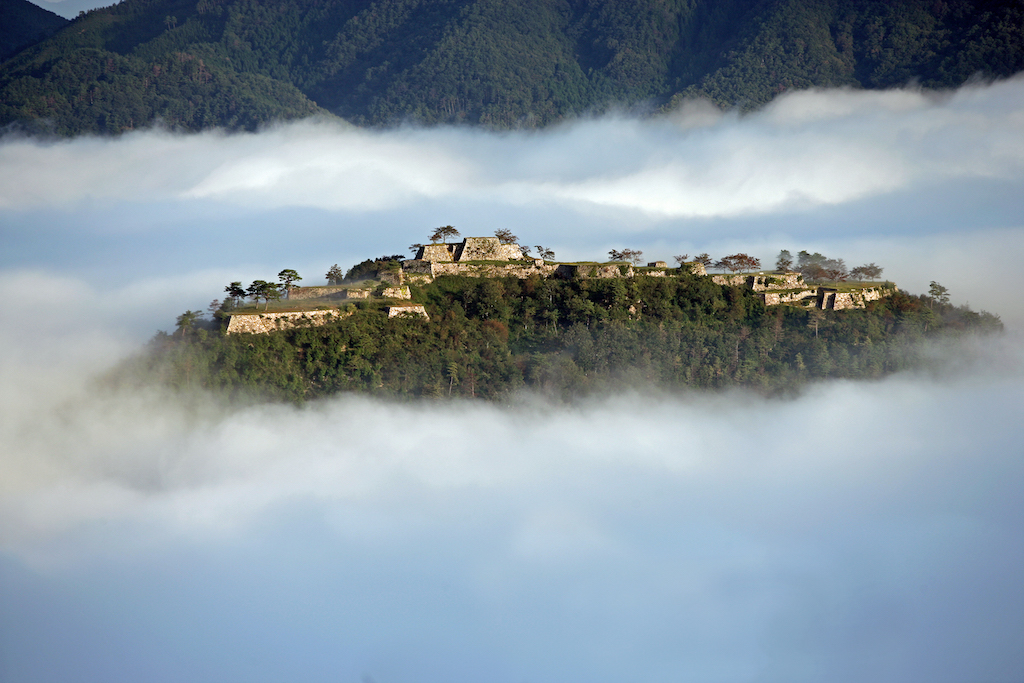
Shifting Alliances and a Succession of Lords
Lacking the might to withstand Nobunaga’s forces, the Ōtagaki clan surrendered and briefly aligned itself with the Oda clan, only to then switch sides when they were attacked by the Mōri clan. This state of affairs didn’t last long, however, and the Ōtagaki were once again attacked by Nobunaga’s forces in 1577. Overpowered, the Ōtagaki abandoned the castle and were brought to ruin. Toyotomi Hidenaga, half-brother of Hideyoshi was installed in the castle, followed by Kuwayama Kazushige. After Toyotomi Hideyoshi became supreme ruler of the country (following Oda Nobunaga’s death in 1582), Akamatsu Hirohide eventually became lord of Takeda Castle, a position he held for fifteen years. Loyal to the Toyotomi camp, Hirohide sided with the Western Army that was defeated by Tokugawa Ieyasu at the Battle of Sekigahara, the decisive battle that led to the Tokugawa clan governing Japan for the next 250-odd years. Even though Hirohide switched alliances after the Tokugawa victory and joined forces with Ieyasu’s troops, he was later ordered to commit ritual suicide.

Surplus to requirements during the centuries of peace that ensued under the Tokugawa reign (to say nothing of being inconveniently situated at the top of a mountain), Takeda Castle was abandoned and left to crumble. The silver mines that the castle had protected came under the administration of Tokugawa government officials, an arrangement that continued until the end of Tokugawa rule in 1868.
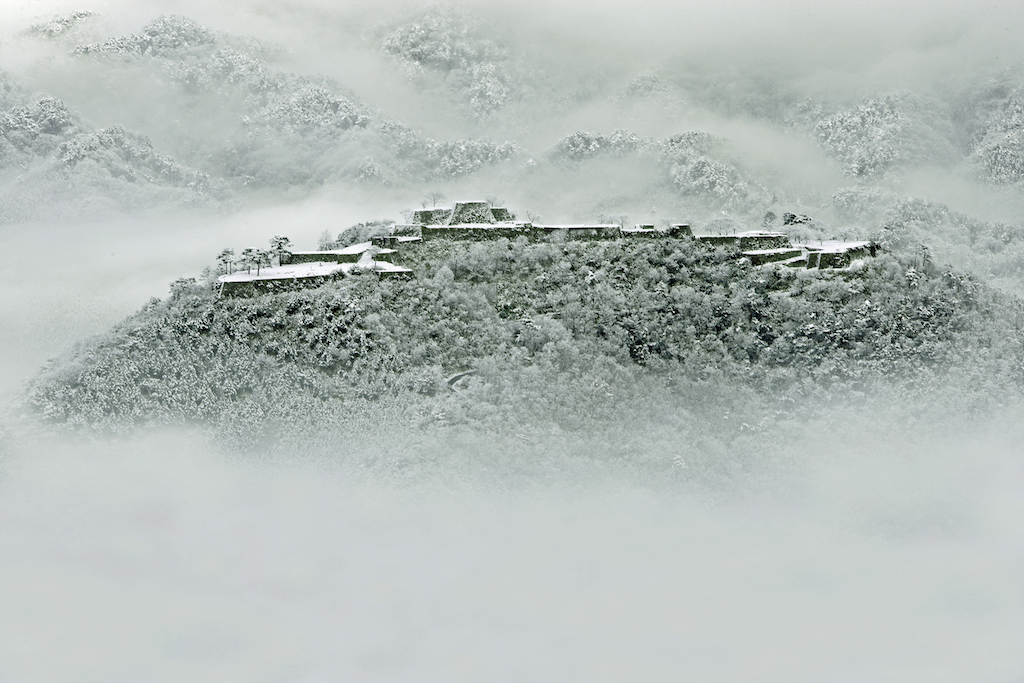
Incorporating a Myriad of Defensive Design Features
The advanced techniques used in the construction of the stone foundation walls, as well as the dating of tiles excavated in archaeological digs at the site, suggest that a major upgrade and reconstruction project was undertaken by Akamatsu Hirohide during the fifteen years he was lord of the castle, most likely on the orders of the Toyotomi administration and for the purpose of defending the silver mines. Specialist castle architects are thought to have been employed in the upgrade, to create an unassailable fortress incorporating every known defensive element.
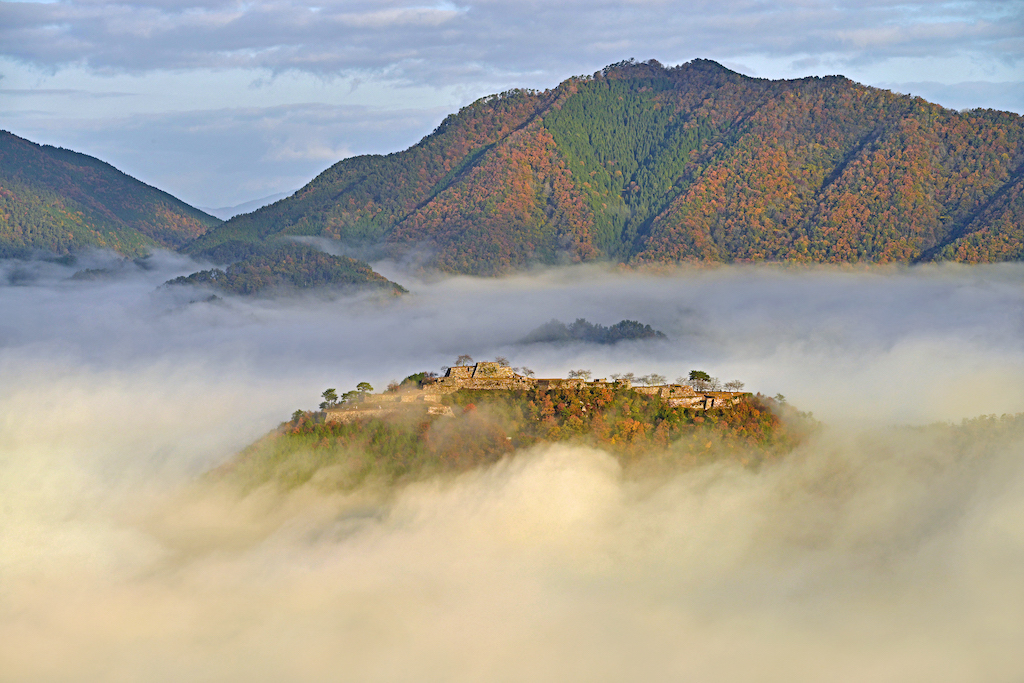
The construction of Takeda Castle utilised every last scrap of flat space on top of the three narrow ridges radiating out from the summit of the mountain. The main enclosure and castle tower were positioned on the summit itself, with the extensive system of watchtowers, walls and other structures that form the rest of the castle radiating out from the keep in terrace formation. The entire circumference of the mountaintop is capped with an unbroken casing of stone wall that forms the lower fortifications of the castle compound. The stone walls that rise up beneath where the castle tower would once have stood are over ten metres in height, becoming steeper as they rise.
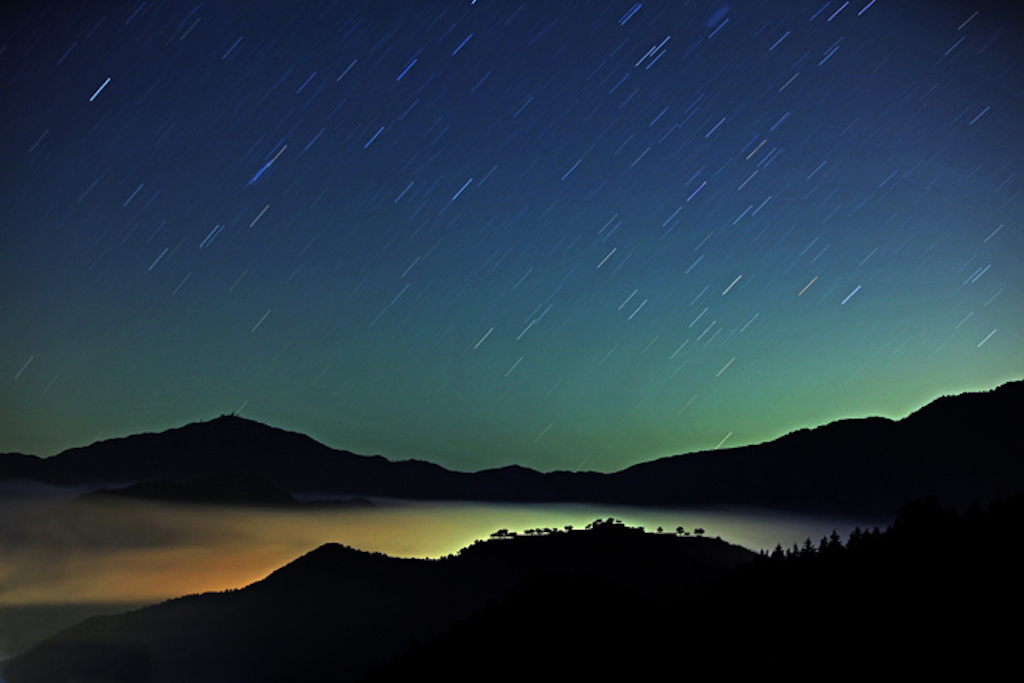
The only way into the fortress was through the gate, but any invading forces that managed to breach the main gate in the northeast of the castle would immediately have been channelled through a series of right-angle corners and U-turns that would have forced them to be constantly turning left and right. This carefully planned defensive layout would have thwarted the progress of enemy forces, not only slowing them down but also making them vulnerable to ambush from all sides. Progress towards the main enclosure would also have been impeded by a maze-like series of barrier gates, dead ends and detours.
Although research has been able to determine from the stone wall ruins just how superior Takeda Castle’s defences were, what the castle buildings themselves looked like is anyone’s guess. No reference at all to the appearance of the buildings can be found in any of the literature or historical records dating back to the time of the castle.
Floating above a Sea of Clouds on a Chilly Autumn Morning
These days, visitors wanting to get to Takeda Castle under their own steam can climb the hiking trail that takes about forty minutes from Takeda Station, on the eastern side of the mountain. Leaving the station, a short walk to the south takes you to a point where you can cross onto Takeda Teramachi Street, on the other side of the tracks. Head north again back towards the station, and just past the Akamatsu family temple, Hojūji, signs will direct you to turn left towards the hills. Starting out as a paved lane, the hiking trail soon turns cross-country and heads off up the mountain. This steep, well-signposted trail is 800 metres long, with rocky steps zig-zagging up the wooded mountainside and past the old quarry where the stones for the castle walls were extracted.
Alternatively, buses and taxis can take you part way up the mountain, leaving a twenty-minute walk up a paved lane to get to the castle ruins. This route offers good views of the surrounding mountains and the town below. The best time of year to see the castle ruins soaring majestically above the ‘sea of clouds’ that forms in the valleys below is autumn, particularly October and November. This phenomenon occurs very early on very still, cold mornings.
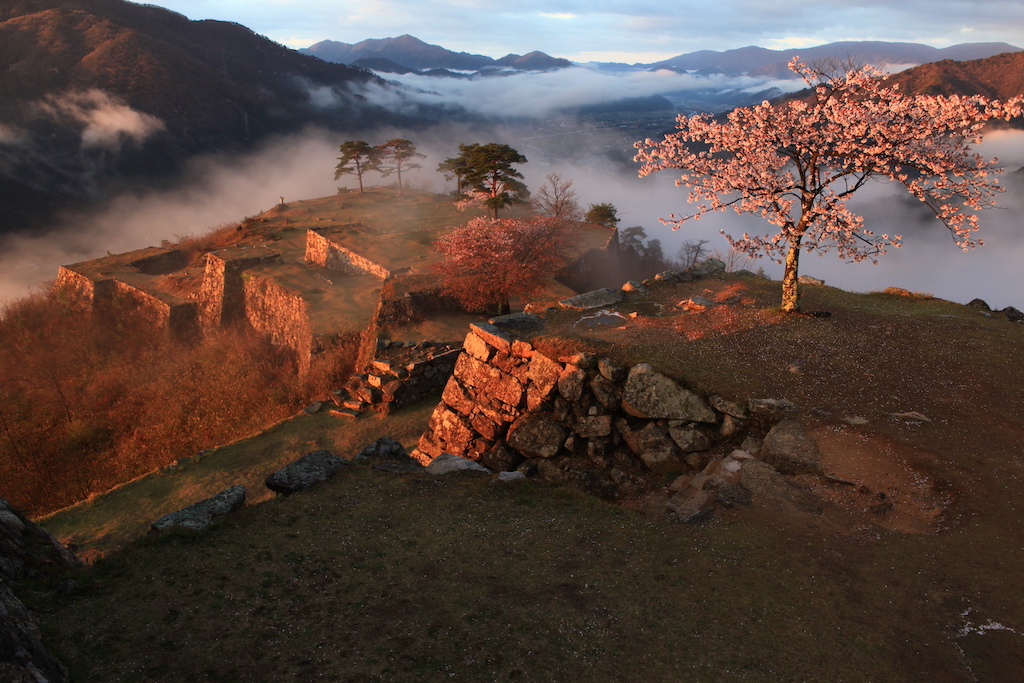
Takeda Castle Ruins
Wadayama-chō, Asago City, Hyōgo Prefecture








